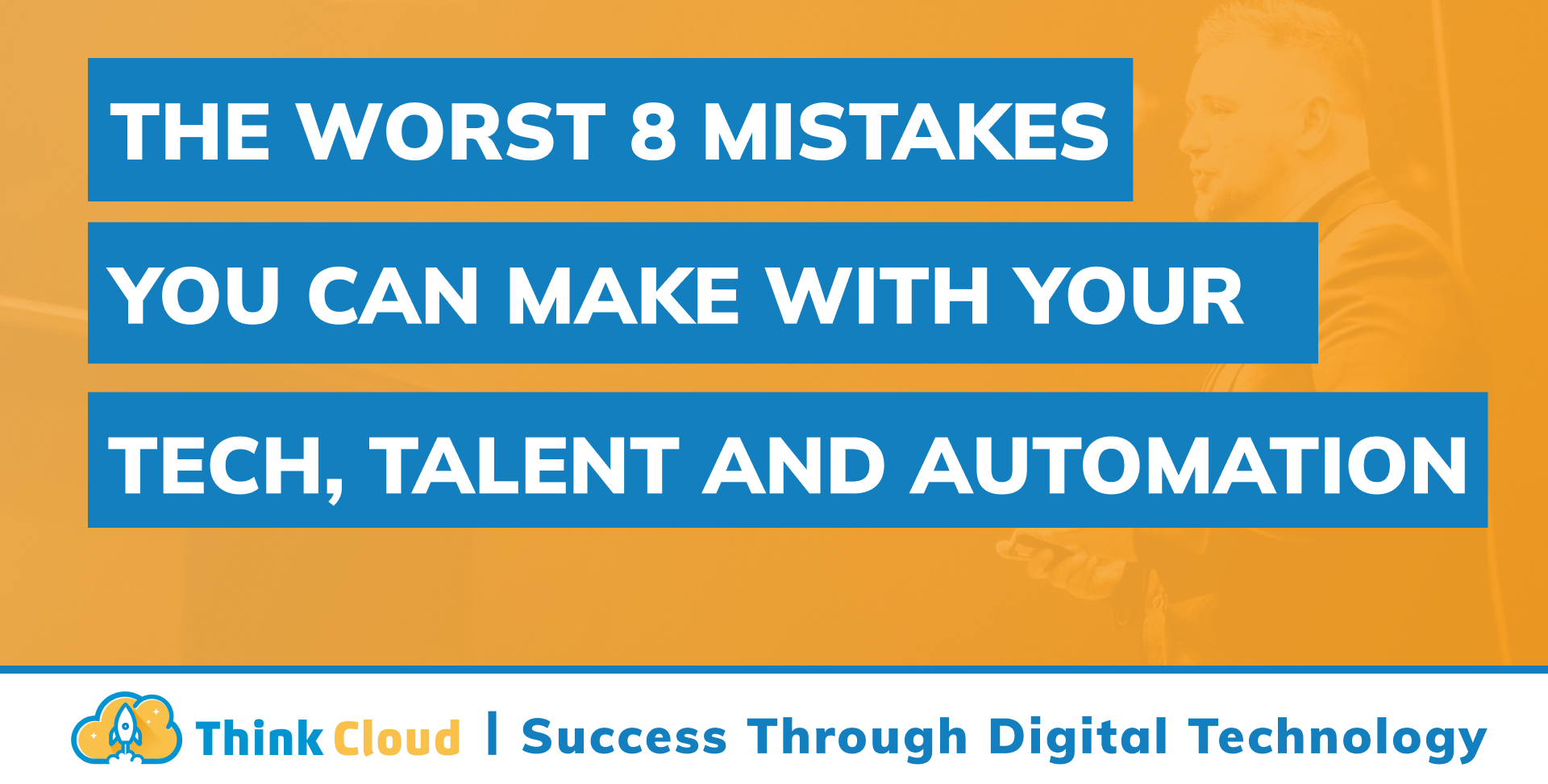The Worst 8 Mistakes You Can Make With Your Tech, Talent And Automation
Content Quick Links:
The Worst 8 Mistakes You Can Make With Your Tech, Talent And Automation
Introduction
It's been challenging, but markets remain bullish! This is the message from Forrester in The CEO’s Guide To Navigating A Turbulent 2023. They talk about how, despite the pandemic, all of us are experiencing the rising cost of living, pointing to an economic slowdown! So why should you remain bullish?
The business world has become even more globalised and competitive, and organisations are pressured to find and retain the best talent. Leaders say they are unlikely to drop spending on talent – internal hires and external services.
In fact, on average, 60% expect to increase spending on personnel, and 62% expect to increase spending on external services. This investment is essential for ensuring businesses have access to the best skills and knowledge necessary to succeed in the marketplace.
The report states, “slashing budgets with a blunt instrument didn’t work in 2020, and it won’t work in 2023, either.” In 2020, those bold enough to invest in technology, talent and automation found success. The pandemic taught us that being agile and adaptable was the only way to survive.
Tech, Talent and Automation
We must invest in our people processes and technology to respond more to the world's ever-changing needs. By investing in digital innovation and our people, you can thrive in 2023 and beyond. Overcoming the challenges and reaping the benefits takes time and effort.
Here are 8 of the worst mistakes you can make:
1. Stunting your growth - through lack of automation
To remain competitive, you must utilise technology to its full potential. Automation can help you scale quickly and efficiently without sacrificing quality. Organisations that have yet to embrace automation will find themselves at a disadvantage.
Examples of good automation include;
Robotic process automation (RPA): bot to handle repetitive tasks
AI copywriters: to generate targeted content
Chatbots: on your website to answer common customer queries
Data analytics tools: to gain insights into your customers’ behaviour
Business process automation (BPA): includes employee onboarding, approval requests, vendor management, supplier onboarding, quotations, claims processing, reporting, performance management and much more!
Many tools, apps and software can help automate business processes and make your organisation more efficient.
If you’re not using automation, you’re stunting your business growth. Please contact me to learn more about how your business can benefit from automation.
We would happily discuss your needs and recommend a solution to help you scale q

2. Poor cyber hygiene - cyberattacks and data breaches won't stop in an economic slowdown
Cybersecurity should be a top priority for any organisation. In an age where data is increasingly valuable, organisations must do everything they can to protect their information.
Cyber hygiene best practices include investment in technology, employee training and education, and developing robust policies and procedures. Cyberattacks are becoming more sophisticated and organised, and the cost of a breach continues to rise. As such, organisations must be bold regarding cybersecurity.
A recent study found that 43 per cent of businesses experienced a cyberattack in the last 12 months, an increase from 33 per cent in 2018. Cyberattacks can devastate businesses, with the average cost of a data breach now exceeding $4 million. This figure is only going to rise as attacks become more sophisticated.
Cybersecurity is an ongoing journey, not a destination, and organisations must continually adapt to the ever-changing threat landscape.
Learn the secrets to PROTECTING your business from cyber-criminals
Sign up for our complimentary cyber-security masterclass today:
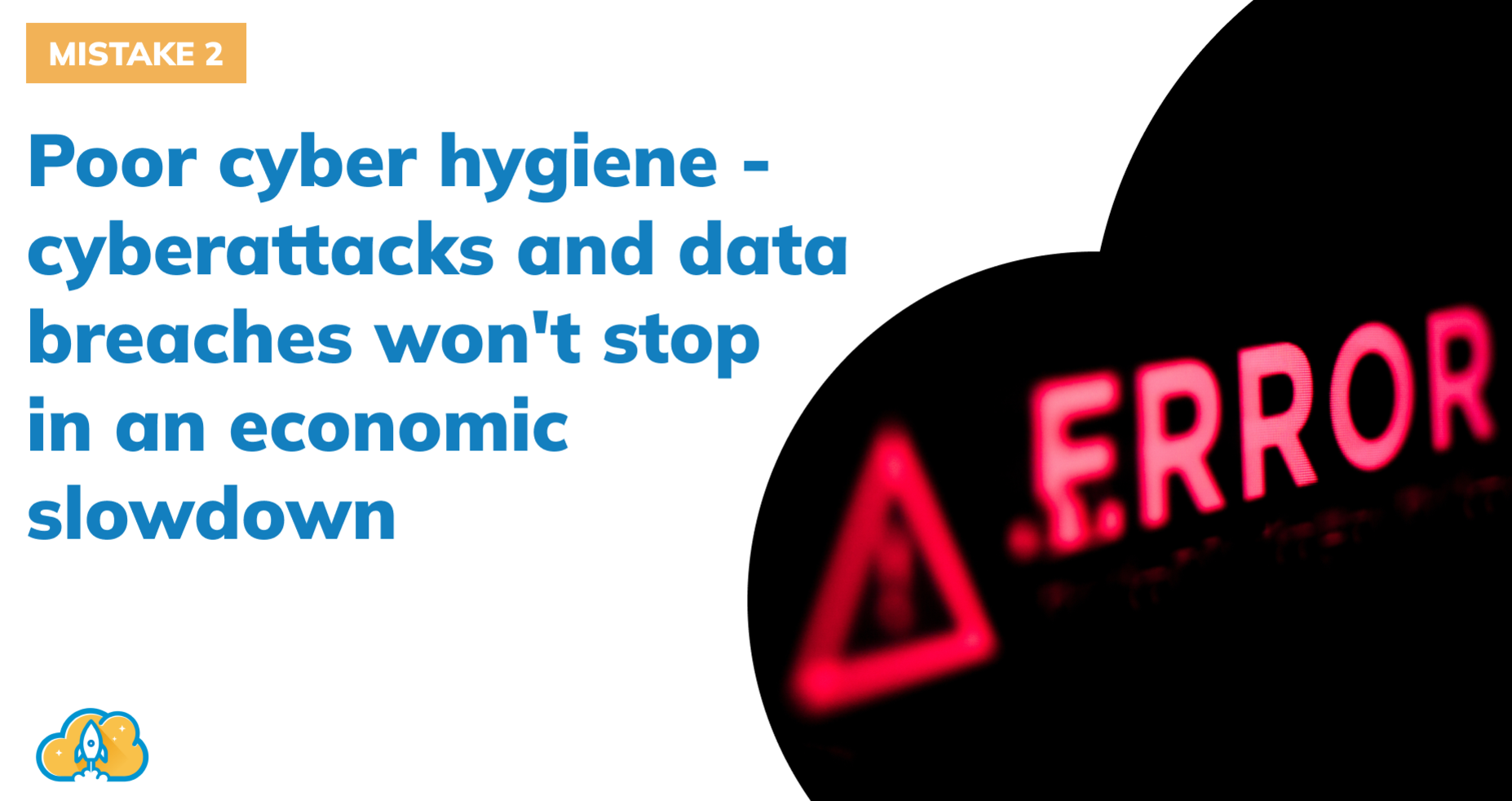
3. Lack of cloud file organisation - instant access to information is a must
The cloud has become an essential part of doing business. It allows organisations to store and access information from anywhere in the world. For many companies, the cloud has become the default option for storing data.
The benefits of cloud computing are numerous. It can help organisations reduce IT costs, improve scalability and agility, and increase efficiency. The cloud can also help organisations be more innovative, providing access to new and emerging technologies.
Despite the many benefits of cloud computing, some challenges still need to be addressed. One of the biggest challenges is security. As more and more businesses move their data to the cloud, they are exposed to new risks.
Another challenge is vendor lock-in. When businesses use a specific vendor’s cloud services, they can become dependent on that vendor. This can make it difficult to switch to another vendor if the original vendor’s prices increase or their service quality decreases.
A practical file structure should be easy to access, understand and use. Lack of organisation will lead to frustration and wasted time as employees search for the necessary information.
To ensure smooth operations, it is essential to have a clear and concise file structure in place. This will make it easier for employees to find the information they need when they need it, and it will also help prevent file duplication and wasted storage space.
Despite these challenges, cloud computing is here to stay and is essential to doing business in the 21st century.
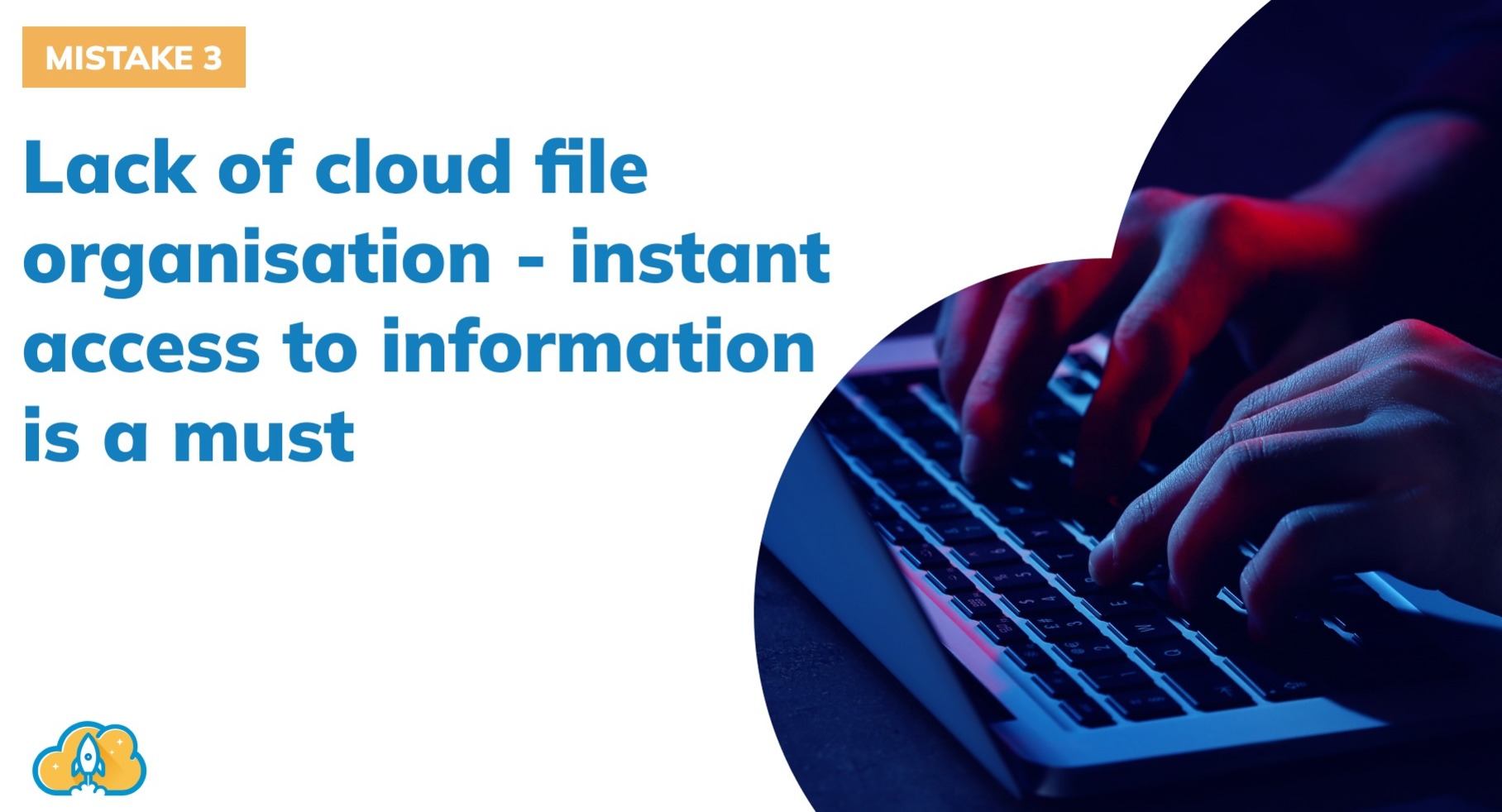
4. Leaving remote workers out of the conversation with a lack of collaboration tools
The pandemic has forced many organisations to allow employees to work from home. While this has advantages, it can lead to feelings of isolation and disconnection. Remote workers must have the same access to information and opportunities as those in the office. This can be done through collaboration tools such as video conferencing.
Examples of good project management tools include;
Notion: - A workspace platform that helps teams stay organised and efficient.
Slack: A messaging app for businesses that lets team members communicate in real-time.
Trello: A project management tool that helps teams visualise and track their work.
Asana: A project management tool designed to help teams better collaborate on tasks.
Examples of good Video conferencing tools include;
Microsoft Teams: A device that integrates chat, video conferencing, and file sharing.
Zoom: A tool that offers HD video conferencing, screen sharing, and group messaging.
Google Hangouts: A tool that lets users make video calls, join chat rooms, and send messages.
Instant messaging tools such as Teams and Google Chat, WhatsApp and Facebook Messenger can also be used for work purposes. This can help with quick communication and collaboration between team members.
It is vital to ensure that all employees have the same access to information and opportunities, regardless of location. Organisations should also provide remote workers with the same training and development opportunities as those in the office, which will help ensure they feel valued and part of the team.
Providing remote workers with regular feedback is essential, which will help them understand how they are performing and where they can improve.
Organisations should also consider the mental health of their remote workers. This can be done by ensuring access to the same support systems as those in the office, including counselling and mental health services.
By providing these collaboration tools, you can ensure that remote workers are given the same opportunities as those in the office. This will help create a sense of community and unite employees, even when working apart
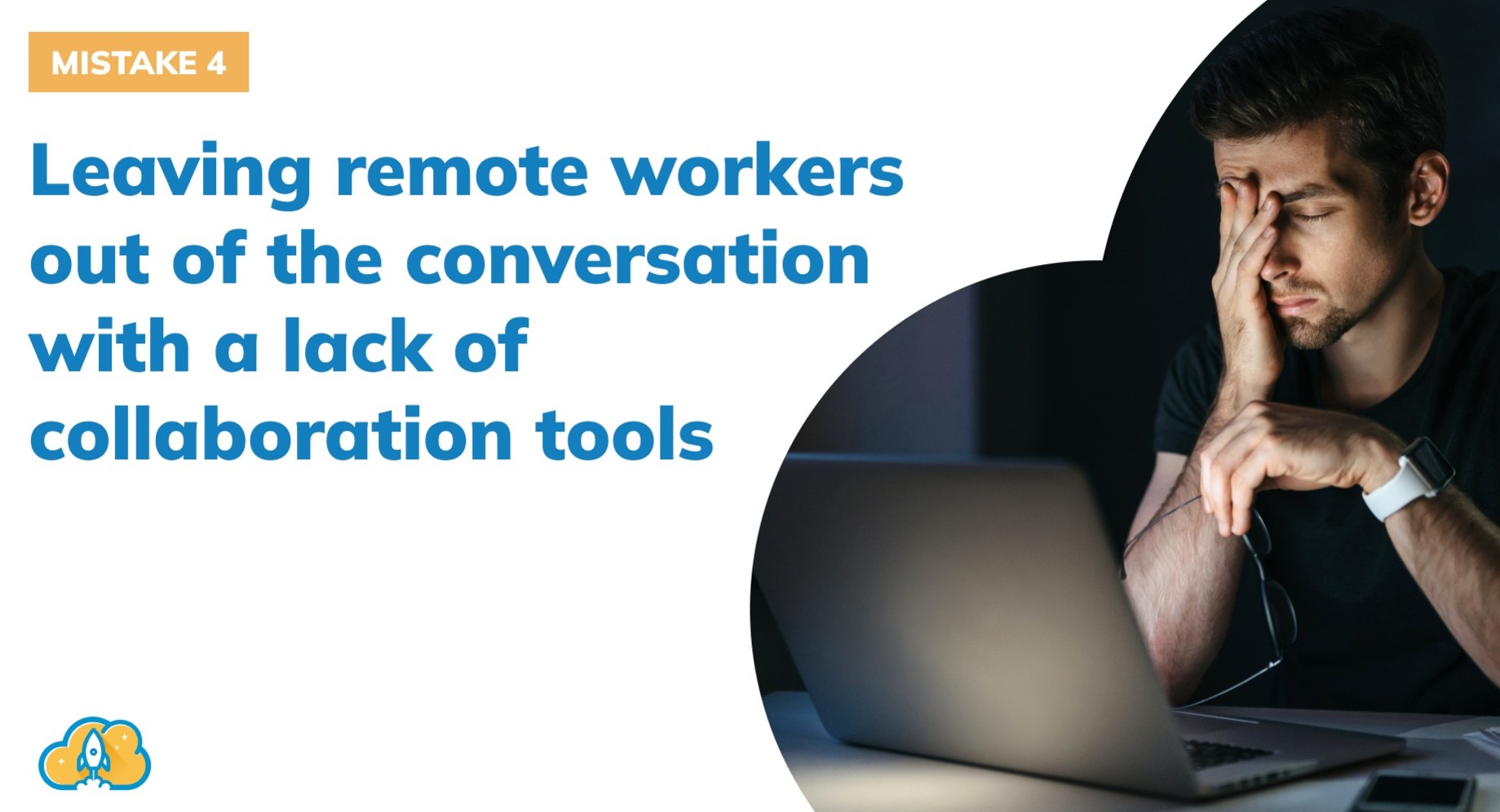
5. Not realising remote doesn’t always mean from home
Working from home has become the new normal for many organisations. However, not all remote employees work from home. They may work as a tradesperson, delivery driver or construction worker who rarely needs to report to an office.
This can create confusion when employers use the terms “remote worker” and “home-based worker” interchangeably. While both types of workers are not physically present in the office, there are distinct differences between the two.
Remote worker works away from the office for most of their time and may work from home, their vehicle, a coffee shop or even another country.
A Home-based worker is someone who works from home most of the time.
If you’re an employer, it’s essential to understand the difference between remote work and working from home. This will help you manage your remote workforce more effectively and avoid misunderstandings.
Just because your job can be done remotely doesn’t mean you must do it from home. In fact, working from home can be distracting and unproductive for many people. Some may not have a dedicated workspace or have poor internet connectivity; others may have children or pets that make it difficult to focus.
As an employer, the key is to be flexible and understand that everyone has different needs. Some employees prefer to work from home, while others find a coffee shop or co-working space more conducive to productivity. Let your employees choose what works best and trust they’ll do the job. This way, you can manage your workforce more effectively and create a happy, productive team because remote and hybrid working is here to stay!

6. Using communication tools that frustrate everyone
Using communication tools that frustrate everyone involved is a common phenomenon in the business world. Good communication is the key to a successful business, yet many companies use platforms that cause more harm than good.
There are a few key reasons why using outdated or poorly designed communication tools can be detrimental to your business:
1. They can cause frustration and decreased productivity
When communication tools need to be updated or more user-friendly, they can cause frustration. This frustration can decrease productivity, as employees save time figuring out how to use the tools instead of getting work done.
2. They can lead to miscommunication
If communication tools are designed well, they can lead to better communication. Miscommunication can result in missed deadlines, confusion, and errors.
3. They can make it challenging to stay organised
If communication tools are organised and easy to keep, track of meaningful conversations and information can be more accessible. This can lead to a disorganised work environment, making staying on top of things challenging.
4. They can cause information overload
If communication tools are not designed or used correctly, they can easily cause information overload. This can happen when too much information is communicated, or vital information gets lost in the shuffle.

7. Not enabling your teams to add applications to solve problems quickly
This is like putting a speed limit on innovation. It disincentives creativity and collaboration and ultimately results in stagnation.
The good news is that there are ways to get around this problem. One way is to use application integration tools. These tools allow you to quickly and easily connect different applications so they can share data and work together seamlessly.
Examples of integration tools include:
Zapier: is a tool that allows you to connect different applications so they can share data and work together seamlessly.
Integromat: This tool allows you to automate tasks between different applications so you can focus on more important things.
IFTTT: is a tool that allows you to create connections between different apps and devices so they can work together automatically
Microsoft Flow: This tool allows you to automate tasks between different applications so you can focus on more important things.
Many others are out there, so research and find the right one for your needs. With the right tool, you can break down the barriers to innovation and empower your teams to solve problems quickly and efficiently.
Another way to encourage innovation is to create a culture of experimentation and employee engagement. This means allowing your teams to try new things, even if they might fail. Encourage them to experiment and learn from their mistakes.
Finally, you can encourage innovation by making it a part of your company culture. Encourage your employees to develop new ideas and solutions, and make it easy for them to share their ideas with the rest of the company.
By taking these steps, you can create an environment conducive to innovation and creativity. This will help your company stay ahead of the competition and grow.
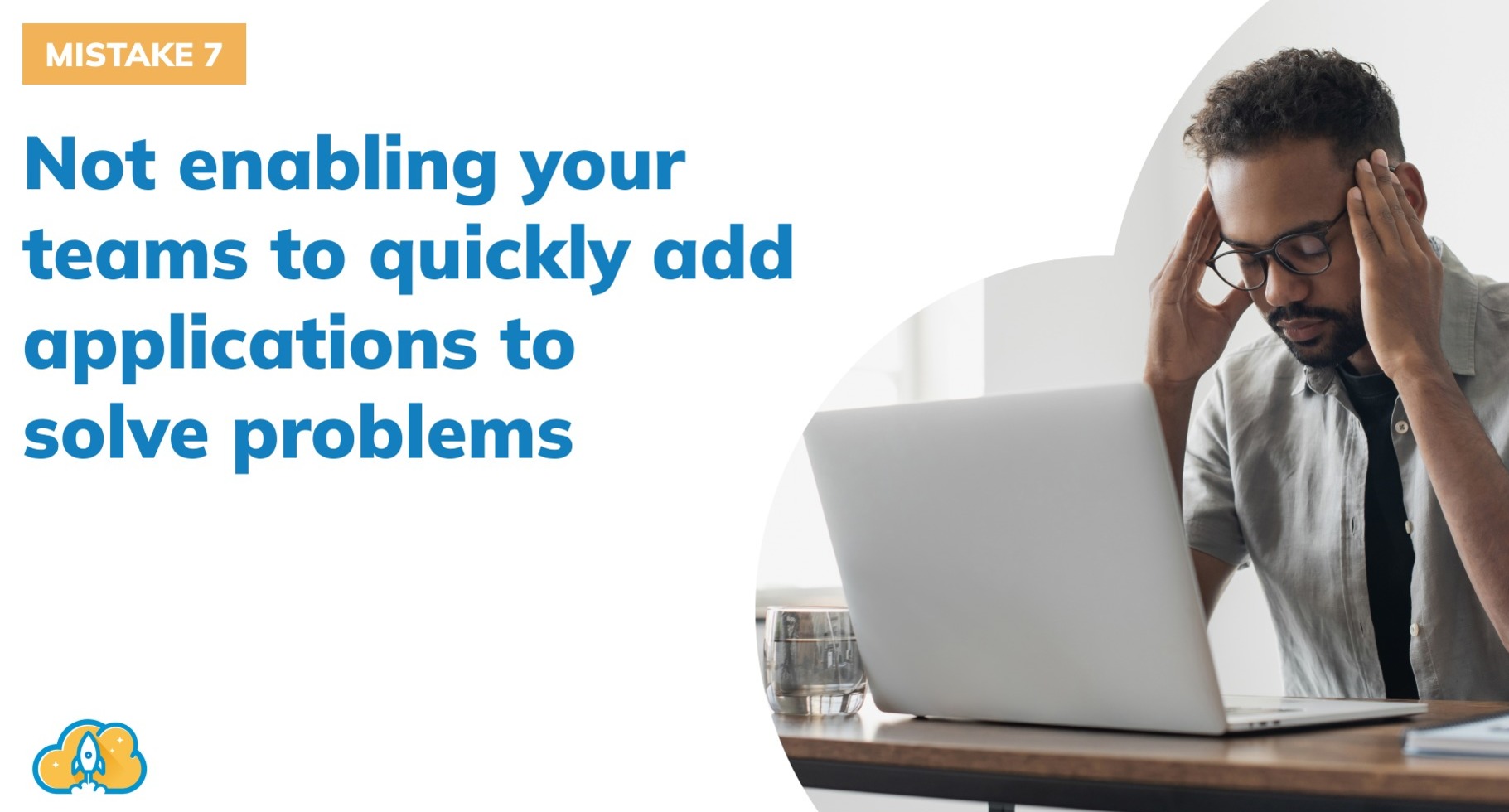
8. Avoiding chaos - By outsourcing your IT Management
Companies' most significant challenge when applying digital transformation is the need for IT management. This is because most companies need help managing the complexity and scale of their IT infrastructure. By outsourcing your IT management, you can eliminate the chaos behind why 70% of companies fail to transform digitally.
The benefits of outsourcing your IT management include the following;
Increased Efficiency: When you outsource your IT management, you will have a team of experts solely focused on managing your IT infrastructure. This will lead to increased efficiency and productivity within your company.
Cost-Effective: Outsourcing your IT management can be cost-effective because you will not have to hire and train in-house IT staff.
Improved Security: When you outsource your IT management, you can access the latest security technologies and practices, helping to protect your company from cyber-attacks and data breaches.
Flexibility: When you outsource your IT management, you can scale up or down your IT infrastructure as needed, giving you the flexibility to respond to changes in your business environment.
Peace of Mind: When you outsource your IT management, you can focus on running your business instead of worrying about your IT infrastructure, leading to improved peace of mind for you and your employees.
Outsourcing your IT management can help you avoid chaos by increasing your efficiency, increasing cost-effectiveness, improving security, and gaining flexibility so you can focus on running your business instead of worrying about your IT infrastructure.
You may also like our article: Benefits and Challenges of Outsourcing IT Services.

Conclusion
We need to stay bold and brave in this crazy business world. That means not standing still, even if the path ahead isn’t clear - just like those businesses during The Pandemic that today are leading their respective industries!
This is a time for businesses to focus on what they can do to be different and how they can change their processes or products to meet the needs of their customers better. There’s no room for “me too” companies anymore - now is the time to truly innovate or risk being left behind.
Get in touch today to see how Think Cloud can help your business achieve its cyber security, technology and automation goals.
When Was The Last Time You Had A Cyber Risk Assessment?
Think Cloud are award-winning Cyber Security Specialist based in Hull, East Yorkshire. Check out how our outsourced Cyber Security can help your business: Outsourced Cyber Security Protection
We assist organizations of 10–250+ users in reducing Cyber Security risk by assisting them in taking full advantage of our Essential Cyber Security Solution. We also provide comprehensive cyber security training and have made our key courses free to all UK Organisations.
Don't Be A Sitting Duck; Things Have Changed. Cyber Attacks Are Up! Learn how to stop hackers, including the secrets to protecting your business. Take-free training today
Free - Sign up for our free Cyber-Security Master class + Learn how to Reduce your Human Cyber Risk here
THE NORTH’S PREMIER CYBER SECURITY & MANAGED IT PROVIDER!
At Think Cloud We Help You Work Faster, Work Smarter, Work Better - Together!
If you like to Think different and want access to more inspirational content then head over to our 'The Hack Podcast' pages.
Based in the heart of the digital tech hub in Hull, East Yorkshire, find out how Think Cloud's award-winning IT Support can empower your business to operate more efficiently.
Award-Winning Cyber Security & IT Solutions for 10 - 250+ Staff.
Share this post:

